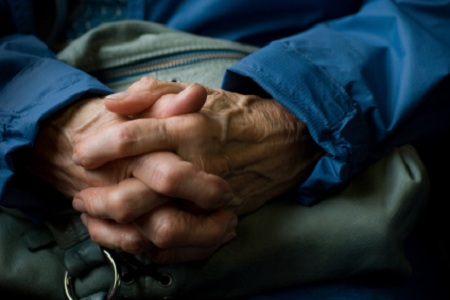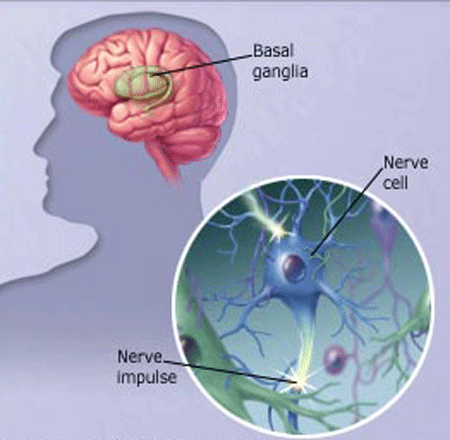What is Parkinson's Disease? Learn about its Signs, Causes. and Treatment

Parkinson's disease affects the nerve cells in the brain and sometimes cause the brain cells to die. As a result, it affects the way you move.
Parkinson's disease affects the nerve cells in the brain and sometimes cause the brain cells to die. As a result, it affects the way you move.
Approximately 60,000 Americans are diagnosed with Parkinson's disease each year. The incidence of Parkinson's increase with age but around 4% of people are diagnosed with the cause before the age of 50.
What is Parkinson's Disease?
As per some reports, Parkinson's Disease is the second most common neurodegenerative disorder and most common movement disorder all around the globe.
It is characterized by loss of control in the body movement especially hands and legs. Furthermore, the disease leads to trembling of the limbs and head at rest, stiffness, slowness, and loss of body balance.

Body movement is managed by an important chemical called dopamine which is produced by the nerve cells. It sends signals to the part of the brain controlling the movement of the body parts.
When a person suffers from Parkinson's Disease, nerve cells break down and dopamine will be no longer in existence resulting some problems in body movement.
The cause is progressive in nature; it gets worse over time. However, there are some treatment measures that can give you some relief but there is no cure.
Symptoms and Signs
1. Tremor
It is the fore and foremost sign you notice in an individual. Most importantly, a person with tremor is not necessarily a victim of Parkinson's Disease.

Tremor initiates in one arm. leg or one side of the body. It occurs most often when an individual is resting but not when working on some task.
The condition may worsen when the person is stressed, tired or excited.
2. Stiffness of Muscles
Rigidity in limbs and trunk is often spotted in an individual which may go worse during movement. It results in muscle ache and pain.
3. Bradykinesia
It refers to the slowness of the voluntary movement, Bradykinesia along with stiffness can also affect the facial muscles.
4. Parkinsonian Gait
A person with the disease develops a distinctive shuffling walk with a stooped position. It makes him difficult to start walking and make turns.
Some Secondary Symptoms
Symptoms of Parkinson's Disease can cause further damage to the brain and can lead a victim to secondary symptoms. Some of them are mentioned below:
- Anxiety, insecurity, and stress
- Memory issues and dementia
- Constipation
- Depression
- Problem in swallowing
- Sweating
- Male erectile dysfunction
- Skin issues
- Urinary problems
Tamra Cantore: Her Parkinson's Disease Story
Tamra Cantore, ex-wife of famous meteorologist Jim Cantore was diagnosed with the Parkinson's disease back in the year 1997. Her kids Christina and Ben when just 9 and 7 years old when she got the shocking news.
Some years later Tamra faced a disastrous incident. She was in a critical condition when she faced a divorce.

Many people might knock the legs out from many of us but Tamra made the circumstances her motivation to live better and fuller life.
She is the founder of an organization Team Cantore working with the Parkinson's Unity Walk and The Michael J. Fox Foundation for Parkinson's Research.
Furthermore, she's also associated with raising fund more than $550,000 for the research itself.
Causes
Low level of dopamine is the leading cause of the issue due to the breakdown of nerve cells. But the exact cause of this breakdown is still left unknown.

Some specific research works are going on these days. Scientists are looking for the possible interrelationship between Parkinson's Disease and genetics, aging, toxins in the environment and free radicals.
Only a minimal result of the disease is found associated with the family and heredity.
Five genes associated with the disease are:
- SNCA
- PARK2
- PARK7
- PINK1
- LRRK2
Who is at Risk for Parkinson's Disease?
- Age of an individual is the largest risk factor. Most people spotted with the disease were older than 60 years of age.
- Men are 1.5 to 2 times more affected than women.
- A Smaller number of people have issues regarding the family history.
- Head trauma, illness and overexposure to environmental toxins such as pesticides and herbicides can be a risk factor.
Diagnosis and Treatment
Early diagnosis of the disease is recommended for an effective treatment strategy. In fact, there's no test to diagnose the disease.
Diagnosis of the disease at an early phase can be a challenging task since many symptoms associated with the disease can be overlapping with other issues.
At least two clear symptoms should be present in a patient.
Recently, there is no treatment to cure Parkinson's disease. The most effective therapy for the cause is levopeda which is converted to dopamine in the brain.
In contrast, the possible side effects of the disease can't be omitted.
Surgical procedures can be an option for people with virtually unmanageable motor symptoms.
In addition to medication and surgery, some changes in the lifestyle, therapies and physical exercise may be beneficial.
For more updates and more health-related articles visit our official page.
